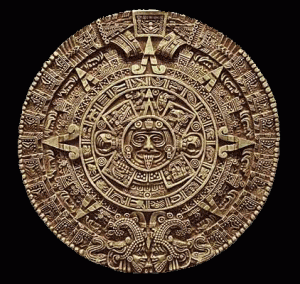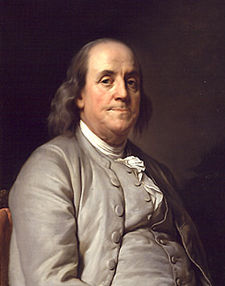I am often asked if there is any correlation or relationship between the Mayan Calendar – with its looming date of December 21, 2012 – and the yugas. There are, in fact, several intriguing parallels.
Same Starting Date
First, the Mayan Calendar begins in 3114 BC. The yuga cycle, being a recurring cycle, doesn’t have a beginning date per se, but the four ages (yugas) within the cycle do. The last energy age (descending Dwapara Yuga) began in 3100 BC. These dates are almost the same. If we take into account the need for both systems (Mayan and Yuga) to have been converted to our current Gregorian calendar, the dates may actually have been the same. Such similar dates makes me believe that both systems must draw on some of the same ancient knowledge.
Similar Ending Date
Second, as practically everyone knows by now, the Mayan Calendar is believed by many to end on December 21, 2012. The beginning of the transition into our current energy age began in 1700 AD. The transition was completed by 1900 AD, at which time mankind fully entered Dwapara Yuga.
There are, however, differences of opinion on the exact date the Mayan Calendar ends. As I mentioned above, it has been necessary to convert from one calendaring system to another in order to have arrived at the 2012 date. Some experts believe the conversion could be calculated in other ways and that the end of the Mayan calendar may already have come and gone.
Even if 2012 is the correct date, the end of the Mayan Calendar matches fairly closely the beginning of our current Dwapara Yuga. You might say that 2012 AD and 1700 AD, or even 1900 AD, are not very close, but if you look at it from the perspective of it having been over 5000 years since the start of the Mayan Calendar these dates are very close – especially if, as some experts suggest, the end date of the Mayan Calendar was earlier than 2012.
One Fifth the Precessional Cycle
Third, another intriguing correlation between the two systems, discovered by my co-author David Steinmetz, has to do with the precessional cycle. I can’t explain the precessional cycle in full without taking up too much time in this post, but, in a nutshell, the precession is the astronomical effect that results in the astrological ages. For example, if we go by the vernal equinox, we are said to be in the Age of Pisces, soon precessing (moving backwards) into the Age of Aquarius.
Modern astronomy tells us that the precessional cycle takes about 26,000 years to complete. Sri Yukteswar, from whom we get the modern version of the yugas, said that the cycle takes about 24,000 years to complete. Some people suggest that the rate of precession may not be constant and that it could speed up in the future, making the complete cycle take less than 26,000 years, or Sri Yukteswar’s “about” 24,000 years could also imply that he knew the cycle is longer than 24,000 years.
If we assume that the creators of the Mayan Calendar had knowledge of the precessional cycle, and that they used an approximate length of 26,000 years, then the length of the current Mayan Calendar is almost exactly one fifth of the 26,000 year precessional cycle. The correlation that my co-author David Steinmetz spotted was that from the beginning of descending Dwapara Yuga (3100 BC) to the beginning of ascending Dwapara Yuga (1700 AD) is exactly one fifth of the shorter 24,000 year cycle.
Both systems correlate precisely in that they have progressed one fifth of a precessional cycle since approximately 3100 BC. What they don’t correlate on precisely is the length of the precessional cycle. Perhaps they started in synch and then lost clarity over time as mankind went through the dark times of the material ages (Kali Yuga – 700 BC to 1700 AD)?
What Does This Tell Us?
What could all this mean in terms of what 2012 portends? Current predictions of what we can expect in 2012 vary widely from worldwide catastrophe to worldwide illumination. Since the creators of the Mayan Calendar give us little to go on we do not have much to guide our understanding. However if there is, as it appears, a correlation between the Mayan Calendar and the yugas, then we can look to the more complete knowledge we have of the yugas to suggest what 2012 may mean for us.
The yugas indicate that we are in an energy age: an age during which mankind can understand that all matter is energy in a different form; and an age in which each of us is becoming more aware of our own inner, subtle energy, or life force.
Our Dwapara knowledge of energy has given us great power, yet, early as we are in the unfolding of Dwapara Yuga, it has not yet given us great wisdom. The result is an unstable world seemingly capable of self-destruction, or of creating such high levels of inharmonious vibrations that our physical world may be rent with upheaval and catastrophe.
Our growing attunement to inner, subtle energy may, however, save us from such an unhappy fate. At the same time that we see unsettling political and economic trends, we also see a worldwide awakening to man’s higher potentials. Meditation, yoga, tai chi, energy medicine, personal spiritual experience, are but a tiny handful of examples of how a new life force-based understanding is manifesting all over the world. Like minded people are finding each other to help create positive, calming influences to offset the negative.
Will it be enough? Will it be soon enough? The yugas tell us emphatically that in the centuries and millennia ahead mankind will rise to heights only dreamed of today. Worldwide illumination is the yuga’s promise for the future. Will we reach that future without destruction? That is really up to us. Each of us has the opportunity to influence how our current age will unfold. Be encouraged. Deliberate and consciously positive acts have a much greater influence than do their opposite. Prayer, affirmation, and living your highest ideals are potent antidotes for the ills of the age – and we have the rising tide of Dwapara awareness working with us to give them power.

